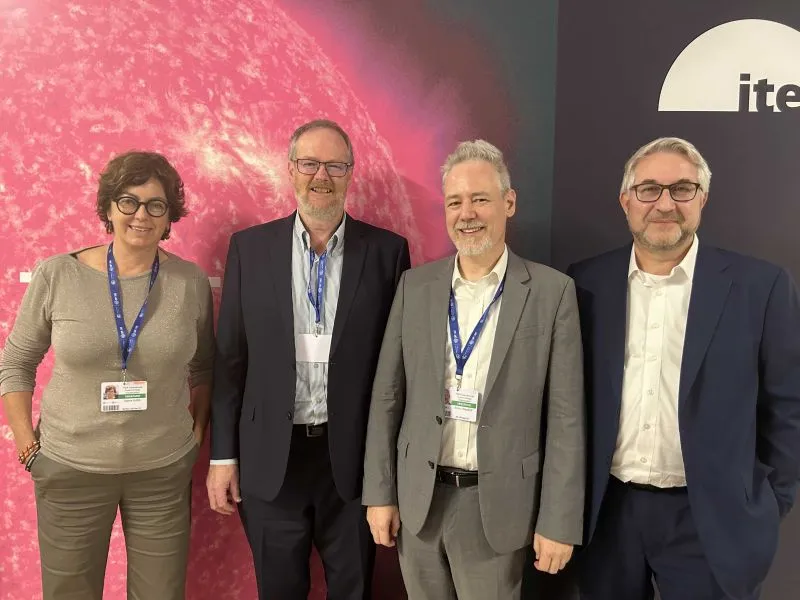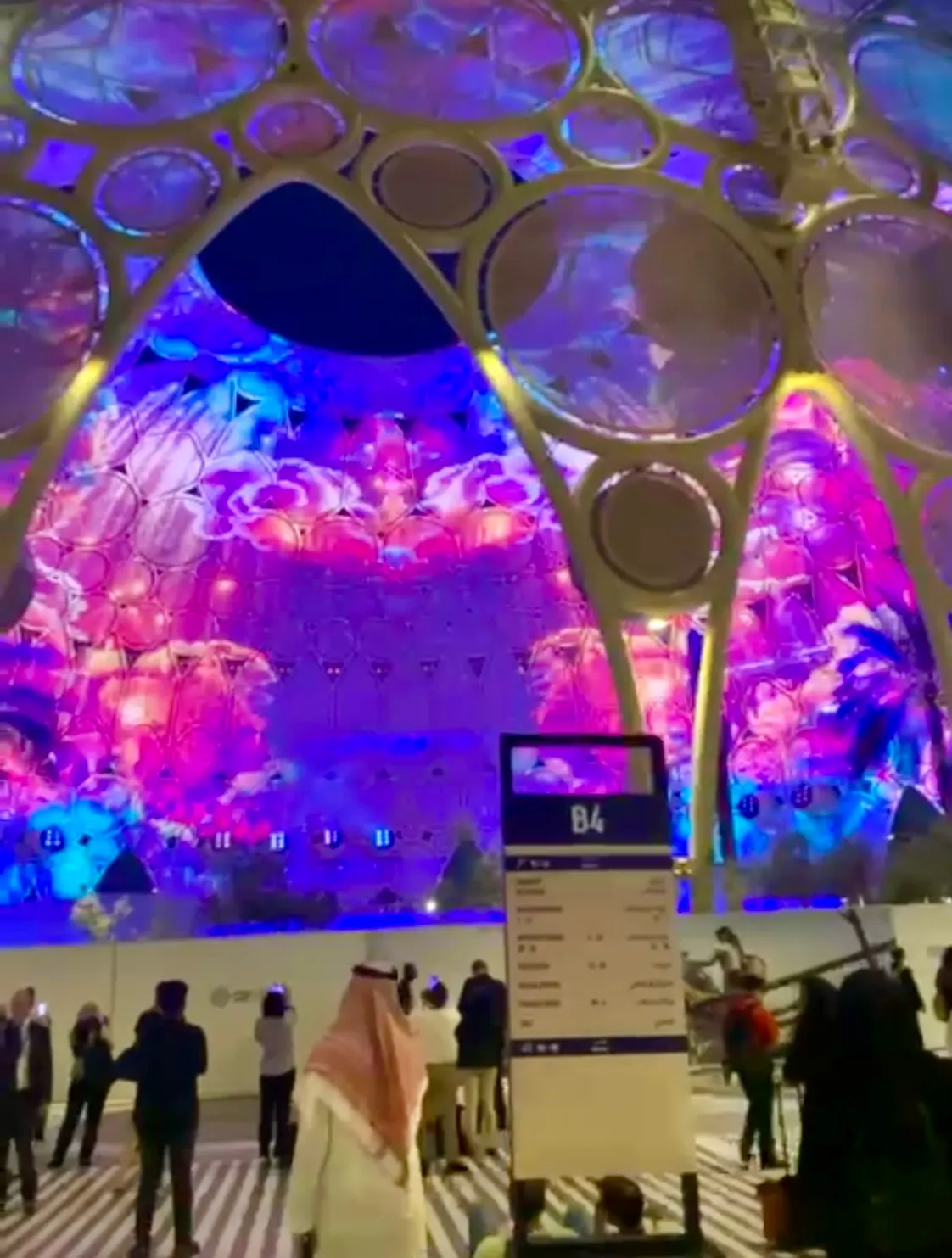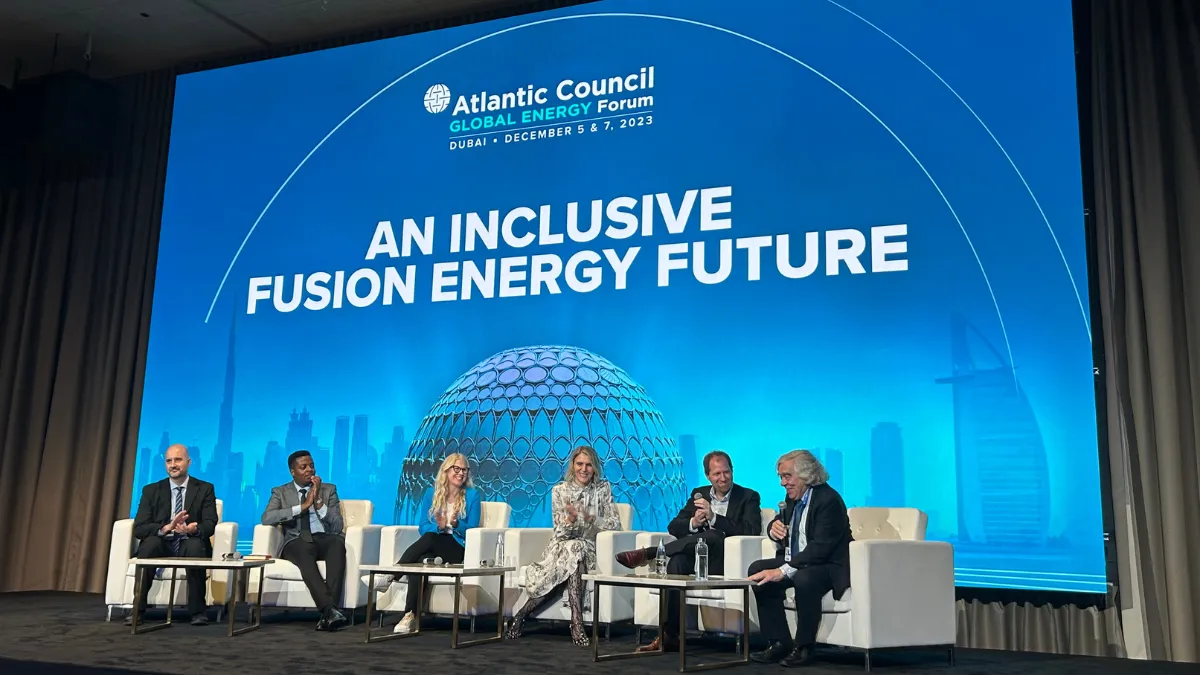COP28: 3 Key Insights
By Simon Woodruff
Another COP has gone by and fusion has featured more heavily than ever. (But did many people notice?!)
After much debate and furore, the “UAE Consensus” agreement includes language on “transitioning away from fossil fuels in energy systems,” as well as urging countries to increase activity in the roll-out of low-emissions technologies including nuclear, hydrogen and carbon capture and storage.
An Inclusive Fusion Energy Future panel © ITER
Here are 3 key insights from Simon Woodruff, who was on the ground at COP28.
1. Annual fossil fuel subsidies outstrip total investment in fusion by >1000x
The world is still heavily reliant on fossil fuels, and dollars that are directed towards fossil fuel subsidies (at $7Tn/year according to the International Monetary Fund) far outstrip total investment in fusion ever (which is ~$6Bn).
Of course, as the IMF says, scaling back subsidies would make a major contribution to slowing climate change. But, equally, new models for investing in fusion commercialisation are needed, and some effort needs to be made to turn those ideas into actions.
A recent publication on Financing Fusion Energy by Alhamdan et al at MIT points to engagement by sovereign wealth funds in fusion as a means for accelerating fusion progress by way of a Megafund. "The fusion megafund was specifically designed to appeal to large sovereign wealth funds, which can place a long-term macro-bet on the fusion industry as a hedge against oil depletion or stricter government regulation enforcing the increased use of renewable energy."
The UAE put on a great show at COP28, demonstrated to the world that it has a progressive agenda for energy diversification, such as investing $50Bn by 2030 as part of their UAE Energy Strategy 2050. They exhibit a real understanding of the need for an energy transition, although are still very reliant on fossil fuel revenues.

Simon Woodruff (centre right) at the ITER stand with Sabina Griffith, ITER, Michel Laberge, General Fusion, and Ralf Kaiser, ICTP. ©ITER
2. Fusion is very much on the periphery of the climate and energy discussion
Despite John Kerry's announcement of a new international fusion engagement plan, as aggressive as the US DOE Milestone program, and despite all the amazing progress in the public and private fusion sectors, fusion is really very much on the periphery of the climate and energy discussion. This could be seen glaringly by the footfall through the ITER fusion stand in the Delegate Zone in comparison to some of the other, renewable energy, stands.
Participating in COP was a great opportunity to communicate and engage. Fusion's progress is starting to reach the right audiences, gradually. We've seen engagement by the fusion community in new initiatives under the Clean Air Task Force, the launch of the IAEA's World Fusion Energy Group, and the launch of a Fusion Energy Task Force by the Sustainable Markets Initiative.
However, there is enormous scope and opportunity for clear communication of the fusion message—one that ought to be supported by all fusion institutions. It also highlighted the importance of an independent news source such as Fusion Energy Insights.
There are lessons to be learned from the nuclear fission community on aligning around a common message: hurdles have apparently been removed for the adoption of nuclear to address climate mandates, with the declaration at COP to triple the energy contributions from nuclear.
3. The energy transition is a long road, but there is an international sense of purpose
The UAE did an amazing job coordinating COP and united the world in a common purpose. The COP campus was populated by 80,000 representatives of almost all nations. Lunch lines and security queues were the great equalizer—we all stood in them: Emerati men and women in dishdashas and abayas, in line with tattooed Māori men and women, Laplanders in curled-toe boots, African tribesmen in stunning head-dresses, and Westerners in suits and business dresses.
Not only was there a shared suffering of long lines, but there was a real shared sense of purpose and impact. We had travelled so far, put our lives on pause, and tolerated it all because we each believed it was worth it.
Nicely done, UAE!


